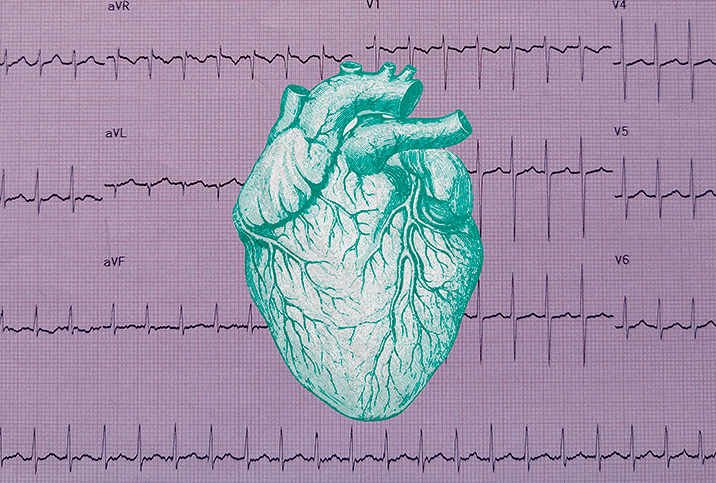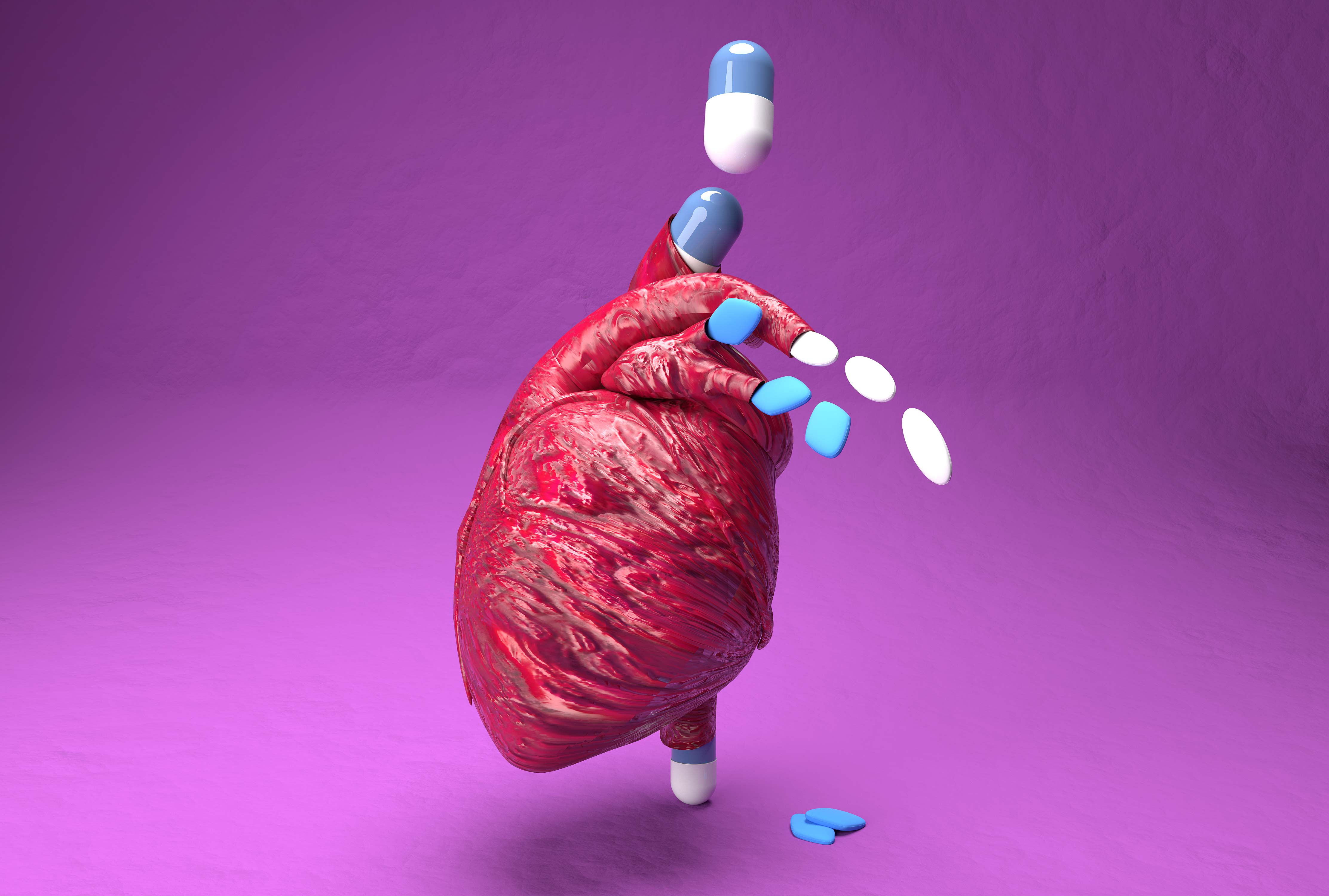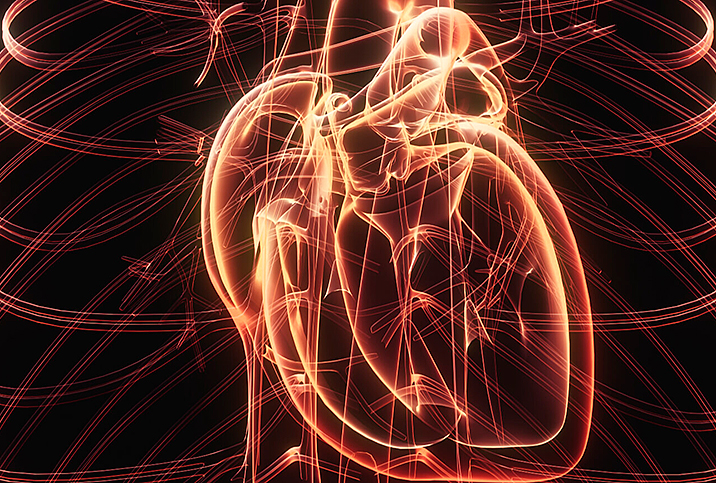The Facts About Atrial Fibrillation

Throughout human history, we've been fascinated with the heart and its role in our bodies. Ancient Egyptians, for example, believed the heart was home to the soul. Since, our medical knowledge has grown exponentially, especially within the past 400 or so years. We're now able to perform open-heart surgeries, and use technology and tools (such as pacemakers) to ensure our precious hearts work as they should.
As far as medicine has come in recent years, issues related to our hearts are still among the most common ailments, especially as we grow older. The Centers for Disease and Control Prevention (CDC) tells us heart disease is the leading cause of death for people across the board, accounting for 1 in 4 deaths in America, or one person dying every 36 seconds.
Checking for symptoms
One common heart condition you may be familiar with, as it affects 1 in 10 adults in the U.S. over the age of 80, is atrial fibrillation.
Sandeep K. Jain, M.D., director of the Center for Atrial Fibrillation at the University Pittsburgh Medical Center Heart and Vascular Institute, identified atrial fibrillation as "a heart rhythm disorder in which the top chambers of the heart don't beat in a coordinated way that has two main consequences."
The first of these consequences is a pronounced lack of blood flow within the heart, which can result in an increased risk of blood clots and stroke, as this can cause blood to collect in the top chambers (atria). The second consequence is rapid, irregular beating of the bottom chambers, known as ventricles, caused by the atria, which can weaken the heart muscle.
"Some people may be asymptomatic, with the condition only being discovered upon examination by a physician," said Pittsburgh pharmacist Emily Bintrim. The most common symptoms, however, she identified as rapid or irregular heartbeat, dizziness, fatigue and shortness of breath.
"The most common cause of atrial fibrillation is advanced age," Jain said. "Other risk factors are hypertension, diabetes or other cardiac diseases. There can also be many triggers for atrial fibrillation, such as alcohol use, emotional events, obesity and sleep apnea."
Options for treatment
When left untreated, atrial fibrillation can become a severe issue. According to Bintrim, in 2019, more than 180,000 death certificates mentioned atrial fibrillation. In roughly 26,000 of those, it was the primary underlying cause.
Thankfully, treatment options are available.
"The mainstay of treatment is to assess stroke risk," Jain said. "In some patients, this requires blood thinners. Additionally, [we use] medications to control the heart rate and rhythm in addition to procedures, such as cardioversion and ablation."
"Each patient is unique and treatment is based on underlying health conditions, but most treatments are focused on rhythm control, rate control and stroke prevention," Bintrim said.
Medications used to control heart rate and rhythm include beta blockers, such as bisoprolol and metoprolol, or calcium channel blockers, such as verapamil and diltiazem. Of course, each of these comes with its own side effects, commonly including tiredness, low blood pressure, cold hands and feet, constipation, nightmares and impotence.
'Each patient is unique and treatment is based on underlying health conditions, but most treatments are focused on rhythm control, rate control and stroke prevention.'
Some patients might have to take medications to reduce their risk of strokes, including aspirin, warfarin, Xarelto or Pradaxa.
"These [medications] are especially important, as during atrial fibrillation, blood does not flow through the heart as it should, which increases the risk of a blood clot forming," Bintrim said. "If that clot breaks off and makes its way to the brain or an artery leading to the brain, that's a stroke.
"These are also generally used when the patient is considered stable," she added. "But if the patient is not stable, they will use direct current cardioversion."
While that term may be unfamiliar to many, the process won't be if you've ever watched a medical drama on TV. Direct current cardioversion involves the use of a defibrillator to deliver a controlled shock to the heart in order to stabilize the rhythm and return it to normal.
Minimizing the risk
There are several actions we can do to minimize the risk of developing atrial fibrillation in the first place. While prevention isn't a guarantee in every case, and we can't avoid atrial fibrillation's number one cause—aging—we can take steps to reduce underlying conditions that lead to the development of atrial fibrillation. This might include avoiding anything that could lead to cardiovascular disease and diabetes, among others, which means quitting heavy alcohol consumption, smoking and an unhealthy diet.
Your goal should be to live actively, focusing on eating a heart-healthy diet and maintaining a healthy weight. Taking proactive steps toward risk reduction can also help to improve the efficacy of treatment options if diagnosed with the condition and the odds of survival.
"Lifestyle modifications, including minimizing alcohol, treatment of sleep apnea and weight loss to achieve an ideal body weight, have all been shown to positively impact outcomes in patients with atrial fibrillation," Jain explained.
When it comes to planning for the future, many of us focus purely on the financial side of things. We set aside money for retirement, buy into life insurance and contribute to 401(k)s, but all this cash isn't going to be much good if we don't live long enough to reap the benefits. This is something serious to consider in middle age, but young people should—and I'm speaking from experience here—consider, for example, how their alcohol consumption might lead to heart failure later in life.
Taking steps while you're young to prevent, or at least lower the risk of, heart conditions later in life is absolutely vital for anyone looking to live a long, healthy life. It's never too early—or too late—to make positive lifestyle changes.

















